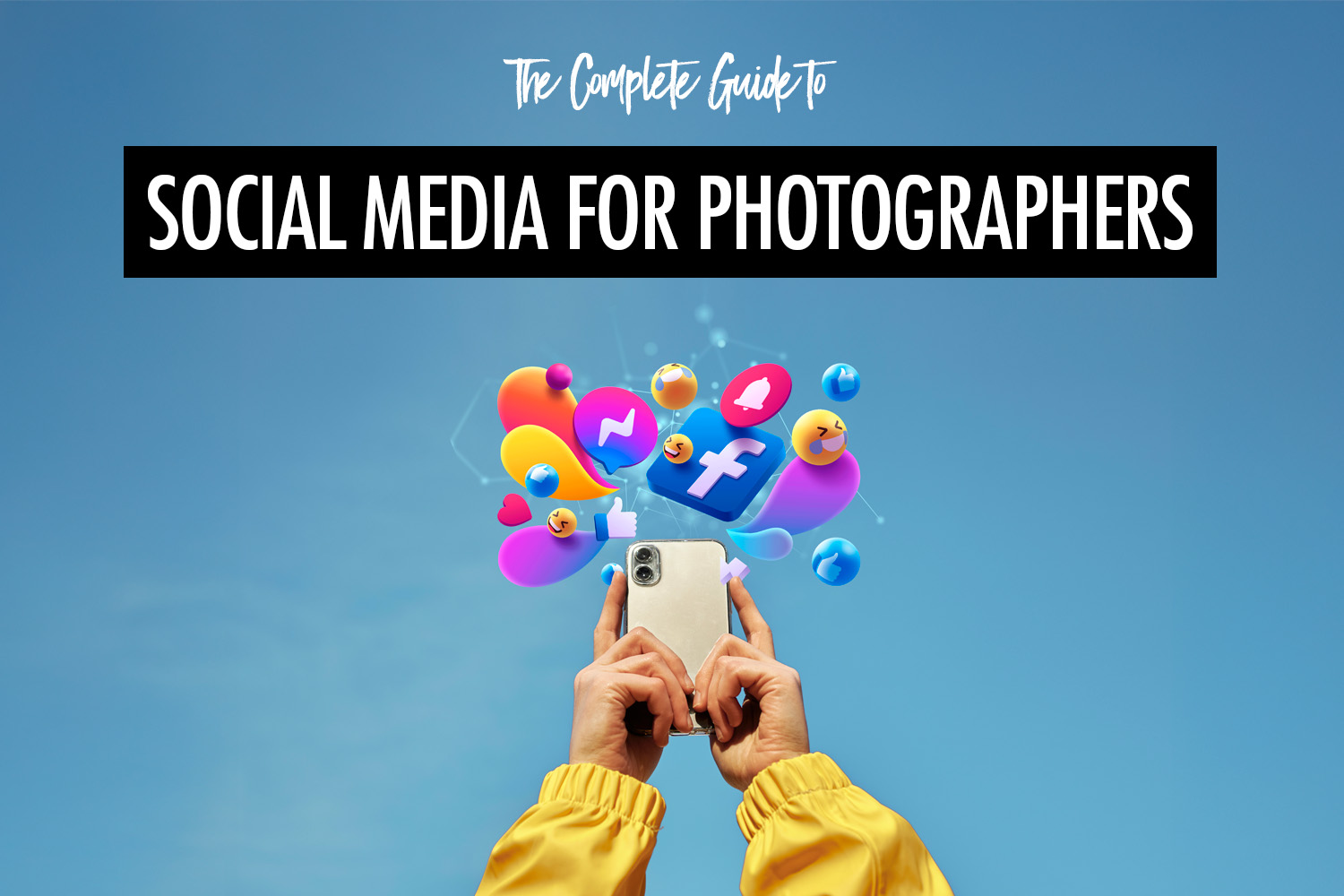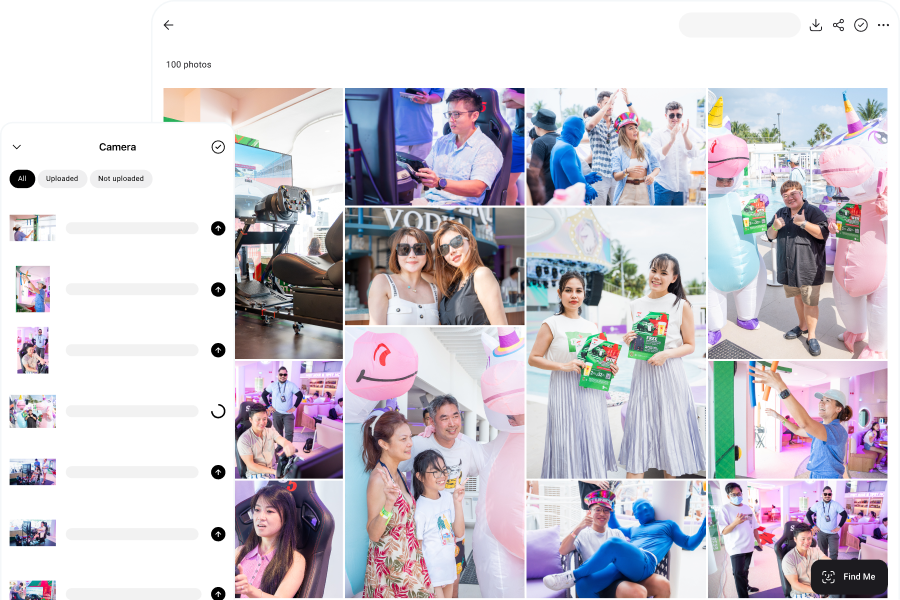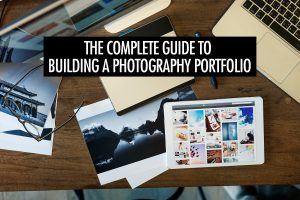Social media is no longer just a place to share snapshots—it’s a powerful marketing tool for photographers to showcase their work, connect with potential clients, and grow their brand. Whether you’re a seasoned professional or an aspiring photographer, having a strong online presence can open doors to new opportunities, from booking more gigs to collaborating with brands.
However, with so many platforms available and ever-changing algorithms, navigating social media effectively can feel overwhelming. What works on Instagram may not necessarily work on Pinterest or TikTok. That’s why understanding the right strategies, tools, and best practices is crucial to making the most of your online presence.
This guide is designed to help photographers build a successful social media strategy. From choosing the right platforms and optimizing your posts to maintaining the highest image quality and using the best tools, you’ll learn everything you need to create a compelling online portfolio that attracts the right audience.
Whether you’re looking to gain more followers, book more clients, or monetize your content, this guide will provide you with the insights to elevate your social media game.
Looking to build a website instead? Read our rundown of the 10 best website builders for photographers.
Benefits of Social Media for Photographers
Social media has transformed the way photographers showcase their work, connect with audiences, and grow their businesses. Whether you’re a freelance photographer, a studio owner, or a hobbyist looking to gain recognition, leveraging social media can significantly boost your career.
Here are some key benefits.
Increased Exposure and Awareness

Social media has transformed the way photographers showcase their work, providing an unparalleled global stage that extends far beyond traditional portfolios. Platforms like Instagram, Pinterest, and TikTok allow photographers to reach audiences who may never have discovered them otherwise, with the potential for a single image to go viral and attract thousands—or even millions—of viewers.
This exposure not only brings in potential clients but also opens doors to collaborations, brand partnerships, and media features. Beyond visibility, social media fosters an interactive community where engagement through likes, comments, and shares boosts credibility and pushes content to wider audiences.
Consistently posting high-quality images, engaging with followers, and curating a strong brand presence can turn social media into more than just a portfolio—it becomes a powerful marketing tool that drives business growth and long-term success, especially when enhanced with tools like Image to Video AI.
Free and Dynamic Portfolio
Social media has revolutionized the way photographers present their work, offering a free and dynamic alternative to traditional portfolios. Gone are the days of relying solely on printed books or static websites that require frequent updates. Instead, platforms like Instagram, Pinterest, and TikTok serve as real-time, interactive portfolios where photographers can showcase their best work, experiment with new styles, and adapt to industry trends.
This flexibility allows you to highlight a diverse range of skills, from portraits and weddings to landscapes and commercial shoots, ensuring you attract a broader audience. Additionally, the interactive nature of social media enables instant feedback, engagement, and networking opportunities, making it an invaluable tool for growth and visibility in the competitive photography industry.
Lead Generation and Client Engagement
Social media has redefined how photographers attract and engage with clients, providing a direct and interactive way to connect with potential customers. Unlike traditional marketing methods, platforms like Instagram and Facebook offer direct communication channels through messages, comments, and interactive features such as Stories, polls, and Q&A sessions.
These tools allow you to engage with your audience in real time, answer enquiries, and build relationships that foster trust and credibility. Many clients now turn to social media to discover and book photographers, often making decisions based on a strong, engaging online presence.
By actively responding to inquiries, showcasing behind-the-scenes content, and encouraging interaction, you can create a more personalized experience that turns followers into loyal clients.
Networking and Collaboration
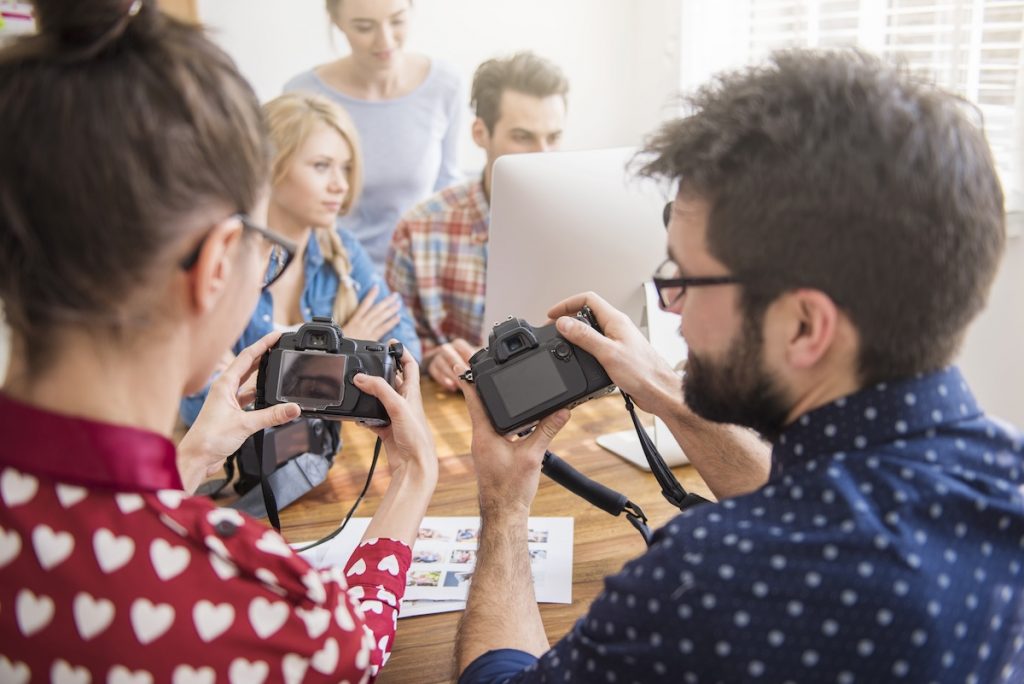
Social media is more than just a platform for attracting clients—it’s a powerful networking tool that connects photographers with industry professionals, brands, and creative collaborators. Engaging with fellow photographers, influencers, models, and makeup artists can open doors to exciting projects, cross-promotions, and new business opportunities. Collaborations not only expand your reach but also allow you to experiment with different styles, gain exposure to new audiences, and build credibility within the industry.
By actively participating in conversations, sharing insights, and supporting others in the community, you can foster meaningful relationships that drive both creative and professional growth. Additionally, networking through social media can lead to mentorship opportunities, workshops, and invitations to exclusive industry events, further strengthening your presence.
The more you engage and collaborate, the more visibility and credibility you gain, positioning yourself as a key player in the photography world.
Business Growth and Monetization
Social media isn’t just about sharing photos—it’s also a powerful tool for growing your photography business. Many photographers use social media to generate income through:
- Booking photoshoots directly via DMs or online schedulers
- Selling digital downloads and prints
- Partnering with brands for sponsored content
- Offering online and offline workshops and courses
- Using affiliate marketing to recommend photography gear
By leveraging these monetization strategies, you can diversify your income streams and reduce reliance on traditional client work. A strong social media presence not only attracts paying clients but also positions you as an authority in your niche, making it easier to secure brand partnerships and teaching opportunities.
With the right strategy, social media can transform your photography passion into a sustainable and scalable business.
Staying Updated with Trends
Social media is a hub for creativity, making it an essential resource for photographers to stay updated on the latest trends, editing techniques, and industry shifts. Platforms like Instagram, Pinterest, and TikTok serve as inspiration boards, showcasing emerging styles and innovative photography concepts that can shape your creative vision.
By following top photographers, engaging in online communities, and analyzing trending content, you can refine your skills and adapt to evolving audience preferences. Additionally, staying informed about new tools, software updates, and technological advancements ensures that your work remains fresh and competitive.
Actively participating in trend-driven challenges, experimenting with new aesthetics, and sharing unique perspectives can help you stand out in a rapidly evolving industry. The more you embrace these insights, the more you position yourself as a forward-thinking photographer who remains relevant and in demand.
Final Thoughts
By leveraging social media effectively, you can elevate your career, build a loyal following, and turn your passion into a profitable business. The key is to use the right platforms strategically and consistently engage with your audience.
But success on social media isn’t just about posting beautiful images—it requires a thoughtful approach that includes branding, interaction, and adaptability to platform changes.
By staying active, experimenting with content formats, and responding to audience preferences, you can strengthen your online presence and create lasting relationships with clients and industry peers. With the right effort and strategy, social media can be a game-changer in transforming a photography hobby or side hustle into a full-fledged, thriving business.
Choosing the Best Platform
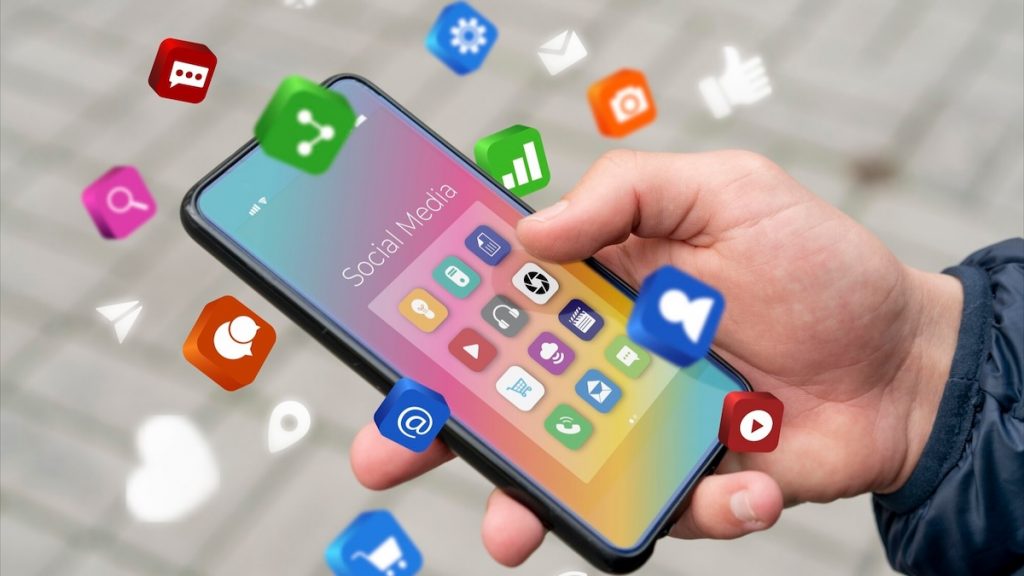
With so many social media platforms available, it’s important for photographers to focus on the ones that best align with their goals, style, and target audience. While some platforms are ideal for showcasing portfolios, others offer better engagement, networking, or business opportunities.
Below is a breakdown of the top social media platforms for photographers and how they can be used effectively.
Instagram: The Go-To Platform for Photographers
Best for: Showcasing high-quality images, engaging with clients, and building a strong personal brand.
Instagram remains the most popular social media platform for photographers due to its highly visual nature. With features like carousel posts, Stories, Reels, and IG Live, you can share behind-the-scenes content, tutorials, and client testimonials in addition to your portfolio. Utilizing hashtags, geotags, and collaborations can also improve discoverability and engagement.
Pro tips: Always post high-resolution images to maintain the quality and professionalism of your portfolio, as blurry or pixelated photos can undermine your credibility. Engage actively with your followers by responding to comments, answering DMs, and sparking conversations to build a loyal community that trusts and supports your work. Interaction not only strengthens relationships but also signals to social media algorithms that your content is valuable, increasing its visibility.
Additionally, take full advantage of Instagram Reels to boost your reach—short, engaging video content tends to perform better in discovery feeds, attracting new followers and potential clients. Experiment with behind-the-scenes clips, editing tutorials, or storytelling through motion to showcase your personality and expertise in a way that static images cannot, especially when using tools like AI voice cloning and an online video editor to make your content more dynamic and professional.
By combining high-quality visuals, consistent engagement, and dynamic content, you can maximize your exposure and grow your photography brand effectively.
Facebook: Community Building and Growth
Best for: Connecting with local clients, running ads, and building a photography business.
Facebook is great for photographers who want to establish a business presence. With Facebook Pages, you can create a professional portfolio, provide contact details, and even take bookings. Additionally, Facebook Groups offer a space to connect with photography communities, share knowledge, and find potential clients.
Pro tips: Leverage Facebook Ads to precisely target your ideal clients and drive more enquiries to your website. With advanced targeting options, you can reach specific demographics based on location, age, interests, and even behaviors—ensuring your ads are seen by people most likely to need your photography services. Use high-quality visuals and compelling ad copy to grab attention, and include a clear call to action (CTA) that directs potential clients to book a session or view your portfolio.
On top of that, experiment with different ad formats, such as carousel ads to showcase multiple images or video ads to highlight your behind-the-scenes process. Retargeting campaigns can also be highly effective, allowing you to reconnect with people who have previously visited your website or engaged with your content. By strategically using Facebook Ads, you can not only increase visibility but also generate consistent leads that help grow your photography business.
Pinterest: Visual Search Engine for Photographers
Best for: Driving website traffic, sharing photography inspiration, and marketing services.
Pinterest functions more like a search engine than a social media platform, making it an excellent place for photographers to share their work and attract potential clients. Users actively search for inspiration on Pinterest, whether it’s wedding photography, portrait ideas, or editing styles. By optimizing pins with keywords and linking them to a website or portfolio, photographers can generate long-term traffic.
Pro tips: Optimize your Pinterest strategy by creating eye-catching, vertical pins with keyword-rich descriptions to improve visibility in searches and attract your ideal audience. Since Pinterest favors tall images (typically a 2:3 ratio), designing visually appealing, high-resolution pins ensures they stand out in the feed and increase engagement.
Use bold typography, clean layouts, and compelling imagery that reflects your photography style, making it easy for users to recognize your brand at a glance. In the pin description, incorporate relevant keywords and hashtags that potential clients or photography enthusiasts might search for, such as “wedding photography inspiration” or “portrait photography tips.”
Linking each pin to your website, portfolio, or Instagram page can drive traffic and generate leads. Consistently posting fresh content, joining group boards, and repinning popular posts can further boost your reach, positioning you as a go-to photographer in your niche.
TikTok: Create Engaging Short-Form Video
Best for: Showcasing creative processes, sharing photography tips, and reaching younger audiences.
TikTok is an emerging powerhouse for photographers looking to showcase their personality and expertise. Short-form videos such as behind-the-scenes footage, editing breakdowns, and photography challenges can go viral quickly, leading to increased exposure. Unlike Instagram, TikTok’s algorithm favors content over follower count, meaning even new accounts have the potential to gain traction.
Pro tips: Increase your chances of getting discovered on TikTok by using trending sounds, strategic hashtags, and maintaining a consistent posting schedule. TikTok’s algorithm favors videos that incorporate popular audio, so staying updated with trending sounds can help boost visibility and engagement. Explore the “Trending” section or follow creators in your niche to find audio clips that complement your content, whether it’s showcasing your portfolio, behind-the-scenes footage, or editing tips.
Hashtags also play a key role in reaching the right audience—combine broad trends like #PhotographyTips with niche-specific tags like #PortraitLighting or #WeddingShoots to maximize exposure. Posting consistently, at least a few times a week, signals to the algorithm that your content is active and worth promoting.
Engaging with comments, participating in viral challenges, and collaborating with other creators can further amplify your reach, helping you grow your photography brand on TikTok.
X: Networking and Discussion
Best for: Engaging in photography discussions, staying updated on trends, and sharing insights.
X is a great platform for photographers who want to connect with fellow professionals, brands, and industry leaders. It’s particularly useful for sharing thoughts on photography trends, participating in Q&A discussions, and promoting new projects. While it’s not a visual-heavy platform, linking images or blog posts can still drive engagement.
Pro tips: Expand your network on X by engaging with popular photography hashtags and interacting with influential photographers. Using photography-specific hashtags also help increase your visibility and attract like-minded creatives. Regularly commenting on, liking, and retweeting posts from industry professionals not only builds relationships but also boosts your credibility within the photography space.
Sharing your own insights, behind-the-scenes content, or photo breakdowns can further establish your expertise and encourage engagement. Joining discussions, participating in Twitter Spaces, and responding to trending topics can also open doors to collaborations and new opportunities.
The more you interact and contribute, the more you position yourself as an active and respected member of the photography community.
LinkedIn: A Platform for Commercial and Corporate Photographers
Best for: Business-oriented networking and securing high-end photography jobs.
LinkedIn is an excellent platform for photographers who specialize in corporate headshots, real estate photography, or commercial work. By connecting with businesses, event planners, and marketing professionals, photographers can land high-value contracts and collaborations.
Pro tips: Keep your LinkedIn profile fresh and compelling by regularly updating it with professional achievements, case studies, and client testimonials. Showcase your latest work, successful projects, and milestones to establish your credibility and position yourself as an expert in your field. Share detailed case studies that highlight your creative process, problem-solving skills, and the impact of your photography on clients or brands.
Client testimonials also add authenticity and social proof, making potential clients more likely to trust and book your services. To further enhance your visibility, you can engage in industry discussions, publish insightful articles, and network with professionals. A well-maintained LinkedIn presence not only attracts new clients but also opens doors to collaborations, speaking opportunities, and brand partnerships.
500px and Behance: Showcase High-End Portfolios
Best for: Building an artistic portfolio and connecting with industry professionals.
For photographers who want a polished, professional showcase of their work, platforms like 500px and Behance are ideal. These platforms cater specifically to photographers and designers, making them great for exposure within the creative community.
Pro tips: Maximize your exposure on 500px and Behance by uploading only your best work and actively participating in photography challenges. These platforms serve as professional portfolios, so curating high-quality, standout images helps you make a strong impression on potential clients, brands, and fellow photographers. Be selective with what you showcase, focusing on your most polished and compelling shots that highlight your skills and unique style.
Engaging in photography challenges and contests not only boosts your visibility but also pushes you to refine your craft and stay inspired. Interacting with other photographers by commenting on and appreciating their work can help you build connections and grow your network. By consistently updating your portfolio and participating in platform activities, you increase your chances of being featured, gaining recognition, and attracting new opportunities.
Which Platform Should You Focus On?
These are the best platforms that are the best for you depending on your photography niche and goals:
- Portrait and wedding photographers: Instagram, Facebook, Pinterest
- Commercial and corporate photographers: LinkedIn, Instagram
- Creative and fine art photographers: 500px, Behance, Instagram
- Looking for engagement and visibility: TikTok, Instagram, Pinterest
- Networking and industry updates: X, LinkedIn
While it’s tempting to be active on every platform, it’s better to focus on 1 or 2 platforms that align with your business and style. By consistently sharing high-quality content and engaging with your audience, you’ll be able to grow your social media presence and attract more opportunities as a photographer.
Tips for Photographers
Building a strong social media presence requires more than just uploading great photos. To truly stand out, you need a strategy that includes branding, engagement, and content optimization.
With the right approach, social media can serve as a powerful marketing tool that helps you attract clients and build a loyal community. Consistency, creativity, and adaptability are key to staying relevant in an ever-changing digital landscape.
Here are some essential social media tips to help you maximize your impact online.
Optimize Your Profile for a Professional Look

Your social media profile serves as your digital storefront, making a strong first impression on potential clients and followers. A well-optimized profile not only enhances your credibility but also makes it easier for people to connect with you and explore your work.
- High-quality profile picture: Your profile picture is one of the first things visitors notice, so choosing a professional headshot or a clean, recognizable brand logo can establish credibility. A clear, high-resolution image helps create a polished look and reinforces your personal or business identity.
- Compelling bio: A well-crafted bio gives visitors a quick snapshot of who you are and what you offer. Keep it concise yet informative—mention your photography niche, location, and how potential clients can reach you. Adding a touch of personality or a unique selling point can also make your profile more engaging and memorable.
- Include a website or portfolio link: Social media platforms provide limited space to showcase your work, so directing visitors to your website, online portfolio, or booking page allows them to explore your full body of work. This makes it easier for interested clients to take the next step, whether it’s booking a session or making an enquiry.
- Consistent username: Use the same username across all platforms to ensure consistency and make it easy for people to find and tag you. A simple, professional handle that aligns with your brand name reinforces your online presence and improves discoverability.
By optimizing these elements, your profile becomes more professional, accessible, and appealing to both potential clients and industry peers. A strong, cohesive online presence can help you stand out in a competitive photography market and turn casual visitors into loyal followers and paying customers.
Prioritise High-Quality and Engaging Content
Photography is a visual art and the quality of your photos is the foundation of your online presence. However, engagement is just as crucial—your content should not only capture attention but also spark conversations and encourage interactions. A well-balanced mix of storytelling, variety, and consistency will keep your audience engaged and invested in your work.
- Focus on storytelling: A great photo becomes even more impactful when paired with a compelling story. Instead of simply posting an image, share the inspiration behind it. What emotions were you trying to capture? What challenges did you face during the shoot? Providing context helps your audience connect with your work on a deeper level, making it more memorable and shareable.
- Use carousel posts: Carousel posts are an excellent way to showcase a series of images from a shoot, highlight before-and-after edits, or break down a photography technique step by step. This format keeps viewers engaged for longer, increasing the likelihood of likes, comments, and shares while providing more value in a single post.
- Incorporate behind-the-scenes (BTS) content: People love seeing the process behind a stunning shot. Sharing BTS clips of your setup, lighting techniques, or editing workflow not only educates your audience but also adds a personal touch, making your work feel more relatable and accessible.
- Experiment with different formats: A mix of static images, short videos, reels, and stories keeps your content fresh and engaging. Reels and short-form videos tend to have higher reach due to platform algorithms, while stories offer a more personal and direct way to connect with your audience in real time.
- Consistent aesthetic: Maintaining a recognizable editing style creates a cohesive and professional-looking feed. Whether you prefer moody tones, bright and airy edits, or cinematic compositions, sticking to a signature style reinforces your brand identity and makes your work instantly recognizable.
By prioritizing both quality and engagement, you can transform your social media into a compelling portfolio that not only showcases your talent but also builds a loyal and engaged community around your photography.
Post Consistently

Consistency is key to growing your presence on social media. Regular posting keeps your audience engaged, helps build brand recognition, and signals platform algorithms to boost your content. By developing a structured approach to content creation and scheduling, you can maintain visibility without feeling overwhelmed.
- Create a content calendar: Plan your posts in advance to ensure a steady flow of content and prevent last-minute scrambling. A well-structured content calendar helps you balance different types of posts, from portfolio highlights and behind-the-scenes shots to tutorials and engagement-driven content.
- Find the best posting times: Timing plays a crucial role in maximizing engagement. Analyzing your platform insights can reveal when your audience is most active, allowing you to post during peak hours for better reach and interaction. Experiment with different time slots to refine your strategy over time.
- Use scheduling tools: Automate your posts with tools like Later, Buffer, or Planoly to save time and ensure consistency, even when you’re busy. Scheduling allows you to maintain a regular posting rhythm without having to manually upload content every day.
- Posting frequency: Striking the right balance is essential—posting too little can make your audience lose interest, while posting too much may feel overwhelming. A good rule of thumb is to post three to five times per week, allowing you to stay relevant without overloading your followers’ feeds.
By staying consistent with your content strategy, you keep your audience engaged, improve your discoverability, and establish a reliable presence in the photography community.
Engagement and Community Building
Social media isn’t just about posting content—it’s about fostering meaningful interactions. The more you engage with your audience, the stronger your community becomes. By actively responding, supporting fellow creatives, and encouraging participation, you create a loyal following that values your work and feels connected to your brand.
- Respond to comments and DMs: Engagement is a two-way street. Taking the time to reply to comments, answer questions, and acknowledge feedback shows that you appreciate your audience. Whether it’s a simple thank you or thoughtful response, these interactions help build trust and keep followers engaged.
- Engage with other photographers: Support fellow creatives by liking, commenting on, and sharing their content. It not only strengthens industry connections but also increases your own visibility. Genuine interactions with photographers in your niche can lead to collaborations, shoutouts, and even new business opportunities.
- Encourage user-generated content: Invite clients and followers to tag you in their photos and share their experiences to create a sense of community while also providing you with valuable content. Reposting user-generated content on your profile or stories not only strengthens relationships but also serves as social proof, showing potential clients that people love working with you.
By prioritizing engagement and community-building, you turn your social media presence into more than just a portfolio—it becomes a space where relationships grow, collaborations happen, and opportunities flourish.
Pro tips: The more engagement your posts receive in the first hour, the better they perform in the algorithm. Responding to comments quickly boosts your reach! Social media platforms prioritize content that sparks conversation, so the more interactions you get early on, the more likely your post will be shown to a wider audience.
Encouraging discussions by asking engaging questions or prompting followers to share their thoughts can help drive immediate activity. You can also use features like Instagram Stories’ polls and question stickers to spark interactions, increasing the chances of early engagement when your content goes live.
Use Analytics to Improve Your Strategy
Tracking your performance is essential for refining your social media strategy. Understanding what works—and what doesn’t—helps you create more engaging content, optimize your posting schedule, and grow your audience effectively. Most social media platforms provide built-in analytics that show key metrics like post reach, engagement, and audience demographics, allowing you to make data-driven decisions for better results.
- Identify the best-performing posts: Analyzing your top-performing posts can reveal valuable insights into what resonates with your audience. Whether it’s a specific photography style, caption format, or content type, replicating successful elements while refining weaker aspects can help you maintain high engagement and reach. If certain posts gain more traction, consider incorporating similar themes or storytelling approaches into future content.
- Monitor follower growth and engagement rates: A high follower count is meaningless without active engagement. Pay attention to likes, comments, shares, and saves rather than just focusing on numbers. If your audience isn’t interacting with your posts, it may be a sign to adjust your content strategy—perhaps by making posts more interactive, improving storytelling, or experimenting with different types of media like videos and carousels.
- Test different posting times: Experimenting with different content types, posting times, and captions can help you determine what works best for your audience. Insights can reveal when your followers are most active, allowing you to post at optimal times for maximum reach. Additionally, testing various caption styles—such as storytelling, question-driven captions, or direct calls to action—can help you find the most effective way to encourage engagement.
By leveraging analytics, you can fine-tune your content strategy, improve audience engagement, and maximize your social media success. The key is to continuously analyze, experiment, and adapt based on data-driven insights.
Master Hashtags and SEO for Discoverability
Hashtags and keywords are essential tools for expanding your reach and making your photography more discoverable. They help new audiences find your content based on their interests and search habits. Since each platform has different best practices, tailoring your approach ensures that your work gets the visibility it deserves.
- Instagram and TikTok: Using a strategic mix of broad and niche hashtags increases your chances of reaching the right audience. Broad hashtags like #Photography or #PortraitPhotography expose your content to a large audience, while niche hashtags like #NYCPhotographer or #CandidShots help you connect with a more targeted group of potential clients or collaborators. Including location-based hashtags can also be effective for attracting local engagement.
- Pinterest and YouTube: These platforms function as search engines, meaning keyword optimization is key. Instead of relying on hashtags alone, focus on writing descriptions and titles that include phrases people actively search for, such as “best wedding photography poses” or “how to shoot golden hour portraits.” The right keywords improve your content’s ranking, increasing the chances of it being discovered by people looking for photography tips and inspiration.
- X and LinkedIn: While hashtags can improve visibility, using them sparingly (one to three per post) ensures your captions remain clean and professional. On these platforms, well-written and engaging captions carry more weight in sparking discussions. Thoughtful posts that share industry insights, personal experiences, or photography trends encourage meaningful interactions and position you as an expert in your field.
By mastering hashtags and SEO, you can enhance your social media presence and attract the right audience to your work. A well-optimized post not only increases visibility but also boosts engagement and potential business opportunities.
Pro tips: Research trending hashtags in your niche using tools like Hashtagify or Instagram’s search bar to stay ahead of the competition. Keep up with popular hashtags to ensure that your content reaches active and engaged audiences. On Instagram, typing a keyword into the search bar will show related hashtags along with their post volume, helping you identify the best mix of high-traffic and niche tags.
Tools like Hashtagify provide deeper insights into trending hashtags, popularity scores, and related terms, allowing you to refine your strategy. Regularly updating your hashtag list based on trends and engagement data can significantly boost your content’s discoverability and increase your chances of reaching new followers.
Final Thoughts
Mastering social media as a photographer goes beyond simply posting great images. It requires a mix of strategic planning, audience engagement, and adaptability. By optimizing your profile, sharing engaging content, utilizing hashtags effectively, and building a strong community, you can grow your online presence and attract more clients.
Stay consistent, track your progress, and be open to experimenting with new trends. With the right approach, social media can become one of your most powerful tools for success in photography.
Upload the Best Quality to Your Social Media
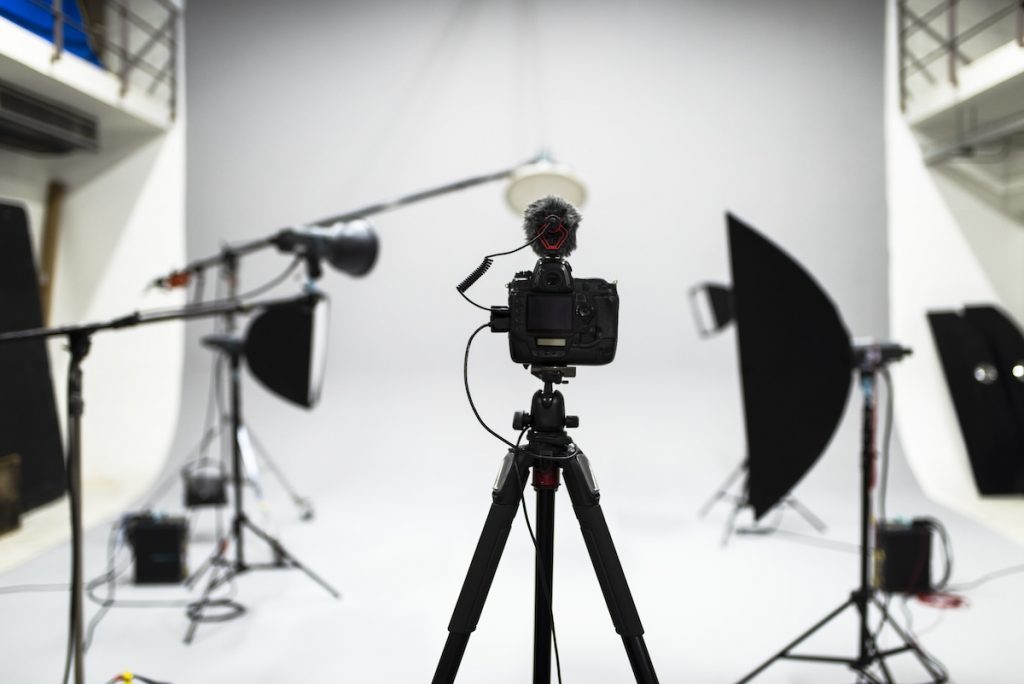
As a photographer, image quality is everything. However, social media platforms often compress images, which can lead to a loss of sharpness, color accuracy, and overall detail. To ensure your photos look their best online, you need to optimize your files properly before uploading.
Below are key steps to maintain the highest quality while sharing your work on different social media platforms.
Understanding Social Media Compression
Most social media platforms compress images to reduce file size and optimize loading times. Unfortunately, this can result in a loss of clarity and color accuracy. Each platform has its own recommended dimensions and file size limits, so it’s important to tailor your images accordingly.
Why it matters: Uploading full-resolution images without optimization can lead to heavy compression and poor display quality.
Solution: Resize and save images in the correct format before uploading.
Pro tip: Always check each platform’s latest image size recommendations to avoid excessive compression.
Resize Your Images
Uploading images at the wrong size can trigger automatic compression, making them look pixelated or blurry. To prevent this, resize your photos to match the platform’s recommended dimensions.
- Instagram: 1080px x 1350px (portrait), 1080px x 1080px (square), 1080px x 566px (landscape)
- Facebook: 1200px x 630px for posts, 2048px on the longest side for high-quality images
- X: 1600px x 900px (landscape), 1200px x 675px (portrait)
- Pinterest: 1000px x 1500px (best for vertical images)
- LinkedIn: 1200px x 627px for posts, 1400px x 425px for cover photos
Pro tip: Use Lightroom, Photoshop or any of the free photo editors to resize images while maintaining sharpness.
Save Your Images in the Right Format
Different file formats affect image quality in various ways. Choosing the correct format ensures that your photos look crisp while keeping file sizes manageable.
- JPEG (.jpg): Best for social media uploads due to small file size and good quality. Use quality settings of 80-100% to balance size and quality.
- PNG (.png): Ideal for images with text or logos since it preserves sharp details.
- WebP (.webp): A newer format that provides high quality with a smaller file size (supported by Instagram and Facebook).
- TIFF (.tiff) or RAW (.dng, .nef, .cr2): Not recommended for social media; these are best for editing before conversion to JPEG or PNG.
Pro tip: Export in sRGB color profile because this is the standard for web display.
Optimize Quality Without Losing Detail
Reducing file size without compromising quality is key to ensuring your images look sharp online.
- Export with 100% quality for detailed shots: If your images are still compressed, slightly reduce the quality to 85% to 90%.
- Apply “Output Sharpening” in Lightroom before exporting: This will help to maintain the sharpness when resizing your images.
- Avoid excessive filters or over-sharpening: Too much post-processing can degrade image quality when uploaded.
Pro tip: Many online tools like TinyPNG or JPEGmini can help you to compress images without visible quality loss.
Upload Directly from a High-Quality Source
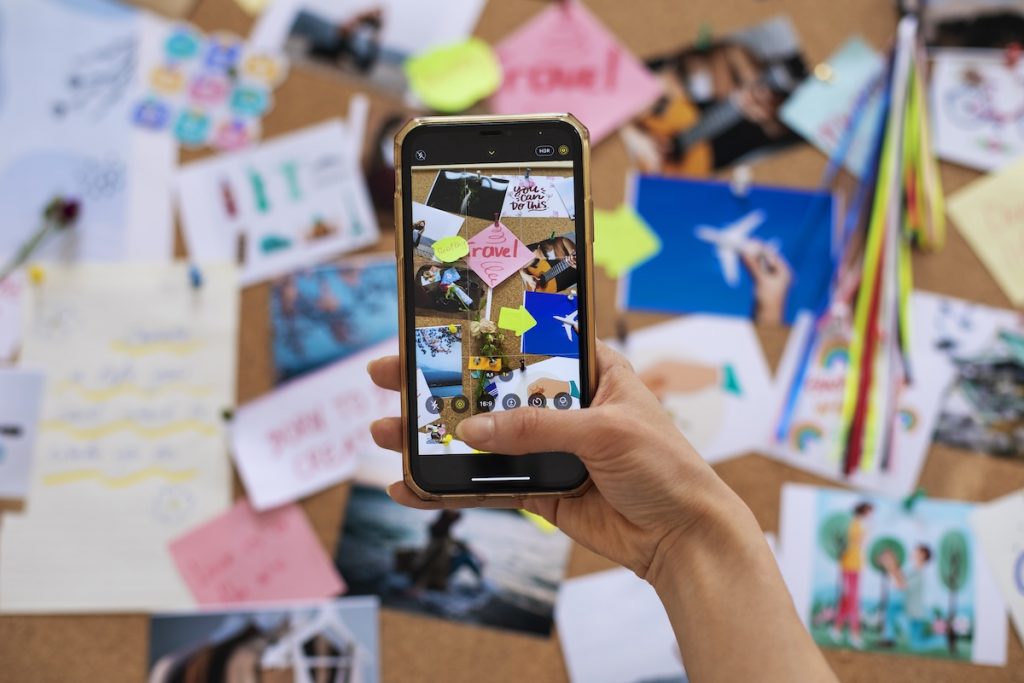
Uploading directly from your phone’s gallery or social media app can sometimes cause additional compression. Instead, try these methods for better quality.
- Use desktop uploaders: Platforms like Facebook and LinkedIn apply less compression when images are uploaded from a computer.
- Upload from cloud storage: This prevents unnecessary recompression that can happen when sending images between devices via WhatsApp or Messenger before uploading.
- Use the highest quality settings in apps: Instagram and Facebook allow HD uploads in their settings. Make sure this option is turned on.
Pro tip: When uploading to Instagram, avoid using in-app filters, as they can further reduce quality.
Post in the Right Format for Videos
If you’re uploading videos or Instagram Reels, ensure your content remains high quality.
- Use MP4 format with H.264 codec: This ensures good quality while keeping file sizes manageable.
- Keep resolution at 1080p (1920px x 1080px) or higher: Lower resolutions will make your videos appear blurry.
- Export with a higher bitrate: This prevents compression from making your videos appear pixelated.
Pro tip: Some platforms like TikTok, Instagram, and Facebook prefer vertical videos (9:16 ratio) for better reach and engagement.
Test Your Uploads and Adjust If Needed
After uploading, check how your images appear on different devices. Sometimes, compression varies between mobile and desktop views.
- View on multiple devices: Check how your post looks on both mobile and desktop screens once uploaded.
- Adjust settings if needed: If something is wrong with your post, tweak the export settings and reupload.
- Experiment with different formats: Some platforms handle PNG better than JPEG, depending on the content.
Pro tip: If an image looks heavily compressed, try uploading it again at a slightly smaller resolution to see if it improves quality.
Final Thoughts
Maintaining high image quality on social media is crucial for photographers looking to showcase their work professionally. By understanding platform compression, resizing correctly, choosing the best file format, and optimizing uploads, you can ensure your photos remain crisp and vibrant.
Small adjustments in your workflow can make a big difference in how your portfolio appears online. Follow these steps consistently, and your images will always stand out on any platform.
Monetize Your Social Media Presence

Social media isn’t just a platform to showcase your work—it can also become a significant income stream for photographers. By building an engaged audience and positioning yourself as a credible photographer, you can turn your online presence into a source of revenue. Here are some of the most effective ways to monetize your social media presence.
Sell Prints and Digital Downloads
One of the most straightforward ways to make money through social media is by selling prints of your photos. Many photographers create online stores or use platforms like Etsy, SmugMug, or Pic-Time to sell high-quality prints, canvases, or digital downloads.
To increase demand, consider offering limited-edition prints or seasonal collections that create a sense of exclusivity and urgency. Additionally, sharing engaging content that tells a story behind your images and directing followers to your online store with a strong call-to-action (CTA) can help boost sales.
Offer Online and Offline Courses or Workshops
If you have photography expertise, teaching others can be a profitable avenue. Many photographers successfully monetize their skills by offering online courses, virtual workshops, or in-person photography sessions.
Platforms like Teachable, Udemy, and Skillshare allow you to create and sell educational content. A great way to establish credibility is by hosting live Q&A sessions or tutorials on Instagram or Facebook Live, allowing you to interact with your audience and generate interest in your course. You can also use Instagram, TikTok, or YouTube to share free educational snippets, driving traffic to your full course and positioning yourself as an expert in your niche.
Brand Collaborations and Sponsorships

If you have a strong following and an engaged audience, brands may be interested in partnering with you for sponsored content. Photography-related companies, camera brands, or even lifestyle brands often look for influencers to promote their products.
Instead of waiting for brands to reach out, proactively pitch your services by showcasing how your photography aligns with their brand values to increase your chances of securing sponsorships. Additionally, building a consistent brand aesthetic and actively engaging with photography-related brands by tagging them in your posts can help you get noticed by potential sponsors.
Affiliate Marketing
Affiliate marketing is a great way to earn passive income by promoting photography gear, editing software, or other industry-related products. By sharing affiliate links, you earn a commission every time someone makes a purchase through it.
Programs like Amazon Associates, B&H Photo, and Adobe’s Affiliate Program offer commission-based earnings. To maintain credibility and trust with your audience, focus on recommending products you genuinely use and trust, rather than promoting anything solely for the commission. Additionally, creating in-depth blog posts, YouTube videos, or social media content that highlights the benefits of these products can encourage your audience to make purchases through your links.
Final Thoughts
Monetizing your social media presence as a photographer requires strategy, consistency, and engagement. Whether you choose to sell prints, teach workshops, collaborate with brands, or leverage affiliate marketing, the key is to provide value to your audience while staying authentic to your photography style. Over time, these efforts can transform your social media into a profitable business, allowing you to turn your passion for photography into a sustainable income stream.
Conclusion
Building a strong social media presence as a photographer is more than just posting beautiful images—it’s about creating a strategy that enhances visibility, engages your audience, and ultimately helps you grow your brand. By choosing the right platforms, optimizing your content, and leveraging tools that maintain high-quality uploads, you can ensure your work is seen in the best possible light.
Beyond showcasing your talent, social media also offers powerful opportunities for monetization, from selling prints and offering courses to collaborating with brands and using affiliate marketing. The key is to remain consistent, authentic, and intentional with your content. Engaging with your audience, staying updated with platform trends, and continuously refining your approach will help you stand out in an increasingly competitive digital space.
As the world of photography continues to evolve, those who effectively harness the power of social media will position themselves for long-term success. Whether you’re looking to attract clients, build a community, or generate income, a well-crafted social media strategy can be the difference between simply sharing your work and turning your passion into a thriving business.
FAQ
It depends on your goals and audience, but Instagram, Pinterest, TikTok, and Facebook often perform well for visual work. Focus on where your ideal clients spend time.
Aim for consistency. Posting a few times per week is better than daily posts that burn you out. Use a content calendar or scheduler to maintain regularity.
Use relevant keywords and hashtags, geotag locations, write descriptive captions, and engage actively with your audience and community.
Post optimized images: high enough quality to look sharp, but within the platform’s size limits to avoid excessive compression that degrades the look.
Yes, you can sell prints or digital downloads, offer workshops or courses, partner with brands or sponsors, or promote affiliate products.
No, it’s better to excel on a few platforms that match your niche and audience, rather than spreading yourself thin across all channels.
Optimize your profile (bio, contact info, branding), keep your feed stylistically consistent, respond to messages and comments, and share behind-the-scenes or process content.

